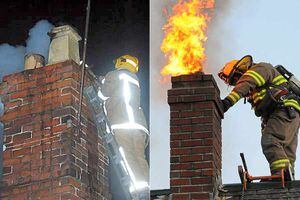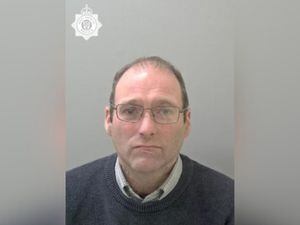Crews called to one chimney fire a day in Shropshire
As the dark, damp and cold of winter has now firmly set in, fire places all over the region are blazing – but every year it leads to a spate of emergencies.

In the first three weeks of this month there was at least one chimney fire in Shropshire every day – and the figures are not unusual for the time of year, said Malcolm Stevenson, spokesman for Shropshire Fire and Rescue Service.
On Tuesday evening, there was one involving a log burner at Innage Lane, Bridgnorth, at about 6.15pm, which it took crews almost two hours to deal with.
Mr Stevenson said: "We recently had 22 chimney fires in 22 days – and at one point five in five hours."
The peak came on January 20 with blazes in Newcastle, near Clun, Wall Under Haywood, near Church Stretton, Oswestry, and two in Bishop's Castle, all in the same evening.
The most recent yearly figures available show that there were 144 chimney fires between April 2014 and March 2015.
"That figure has barely changed in years," Mr Stevenson said.
"Just about every other category of accidental fire has been decreasing in frequency for a decade or so – but year-on-year the numbers have stubbornly refused to go down for chimney fires.
"It's a picture that's familiar to fire services up and down the country, Shropshire is not a hotspot for chimney fires as such, but we are a rural county and the number of chimney fires tends to be higher in rural areas because people have far easier access to wood."
He said the reason the figures refused to fall was mysterious, as every year the fire service put the word out about the dangers of chimneys fires, and they are easily preventable.
He said one reason might be that while long-time chimney owners may have become wise to the dangers, a new generation of home and business owners is rediscovering the joys of having a real fire on the premises. "One of the possible explanations is the increase in the use of log burners," Mr Stevenson said.
Around 200,000 wood-burning stoves are installed a year nationally, their popularity stemming from the desire to cut fuel costs and add to the value of a house along with advances in stove technology meaning burners can be smaller and more efficient.
They are also seen as less harmful to the environment than other heating sources and, because they are compact and contained, people see them as cleaner all round than an open fireplace.
But Mr Stevenson said in fact they tended to have a narrower flue which could get blocked more easily.
"People who have just got them sometimes don't realise they need to be cleaned at least as regularly as an open fire," he said, "Some manufacturers recommend four times a year."
Another reason for chimney fires staying common may be that people neglect the risks as that they don't see them as too serious.
But though often not life threatening and contained in the chimney, putting the blazes out still tied up firefighters – and chimney fires themselves could take a much more serious turn, Mr Stephenson said.
"Chimney fires can become much bigger and substantial if you have a gap in the flue or cracks and holes in the rendering in the brickwork.
"It can spread to the roof space or upper floor and if it does that you're suddenly dealing with something much worse. That's a real risk with chimney fires."
However, he said a few simple precautions could guard against them.
"First of all chimneys are not being swept often enough – we recommend at least twice a year," he said.
"Second is the type of things people are putting into their fires and log burners."
He said many did not realise burning wood that has not been allowed to dry out could have disastrous consequences long-term.
"Unseasoned wood produces a significant amount of tar that can build up in the chimney and re-ignite at any time.
"Another thing that can cause that kind of build-up is putting things on the fire that aren't supposed to be there. We've all done it, tossing the odd crisp packet onto the fire, but all those things can add to it," he said.





